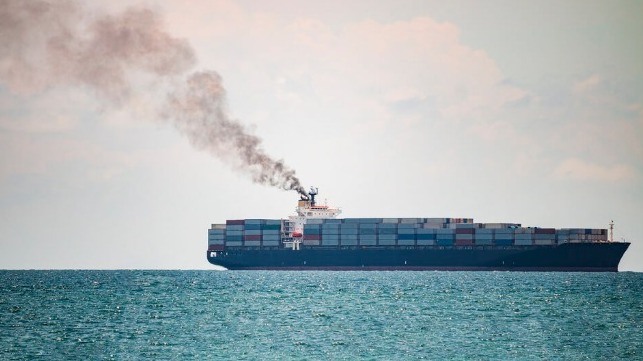EU Parliament Finalizes Emissions Trading Rules for Shipping

The European Parliament has given its final stamp of approval to a package of climate measures at the heart of its "Fit for 55" emissions scheme, which aims to cut the bloc's overall greenhouse gas footprint by 55 percent by 2030. The legislation brings shipping into the EU's Emissions Trading System (ETS) for the first time, pulling vessel emissions into the European carbon market with a phase-in period beginning next year. The measure is the product of extended negotiations between the EU Parliament, Commission and Council, and still requires final signoff by the national representatives on the Council.
Crucially, the package will allocate 20 million ETS allowances (worth about $2 billion at current value) to supporting the decarbonization of shipping, a key demand from the industry.
"Addressing the climate crisis and decarbonising shipping is not a question of ‘if’ but a question of ‘how’. Setting aside part of the ETS revenues for maritime is a victory for the energy transition of the sector. Dedicated support through the Innovation Fund is indeed key to bridge the price gap with clean fuels,” says Sotiris Raptis, ECSA’s Secretary General.
The requirement will phase in over a three-year period, and it incorporates another key demand from European shipowners: a mandatory tax pass-through to charterers, who determine shipowners' routes, speeds and fuel consumption (and therefore emissions). Under the "polluter pays" principle, the new legislation recognizes the charterer as the ultimate source of the CO2, though the tax is administered on the shipowner.

that matters most
Get the latest maritime news delivered to your inbox daily.
Owners of large cargo ships will be required to pay for allowances covering 40 percent of emissions in 2024, 70 percent in 2025, and 100 percent from 2026. The phase-in will begin later for large offshore vessels, which will be included starting in 2027. OSVs and freighters under 5,000 GT are not currently subject to the rules, and the EU will revisit their status in 2026. Non-CO2 emissions like NOx and methane (from LNG) are covered by the scheme.
The battle over shipping decarbonization in the EU is far from over, however. On Tuesday, a consortium of environmental groups including Transport & Environment and WWF filed suit against the European Commission to challenge the inclusion of natural gas in the EU Taxonomy, the list of "green" energy sources approved for EU financing. Under the commission's current rules, certain natural gas projects are eligible for funding from the EU Recovery and Resilience Facility, Invest EU, the European Regional Development Fund and the Emissions Trading Scheme Modernisation Fund. Gas is essential to the European economy, and member states - particularly in Northern Europe - have invested millions in new LNG import infrastructure since the deterioration of relations with Russia began last year.
